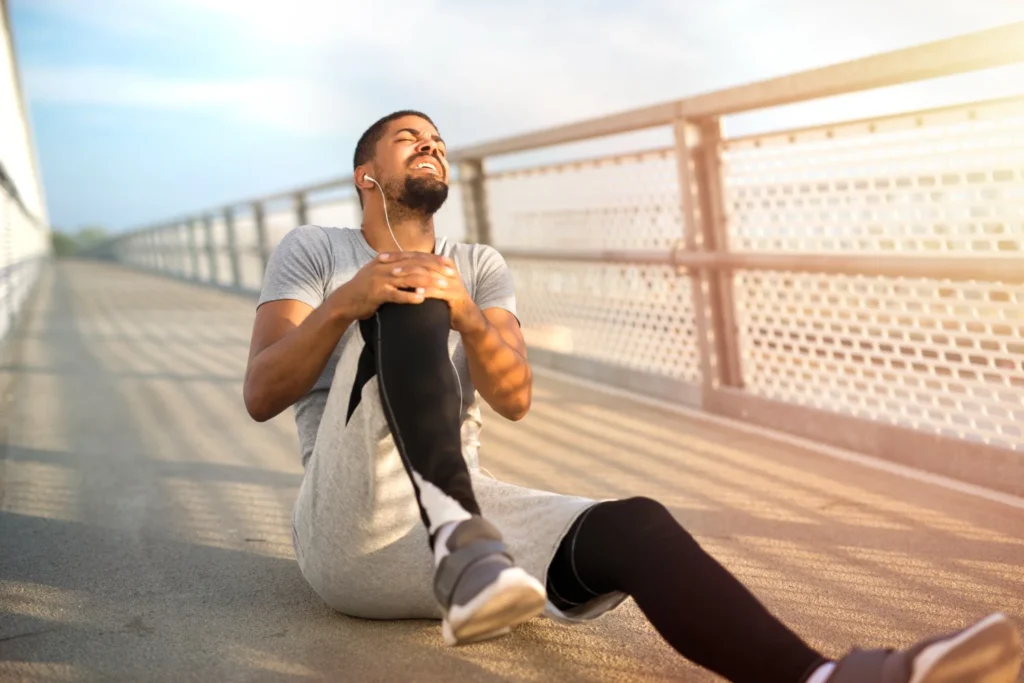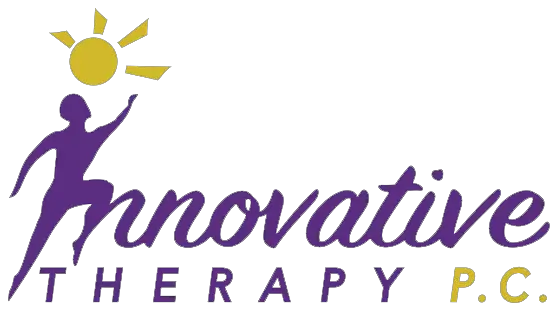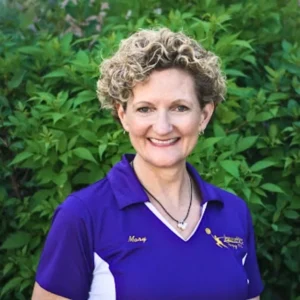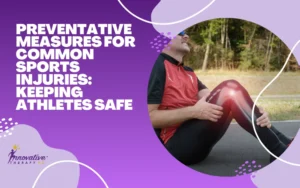Dealing with a runner’s knee can be frustrating for anyone who loves running or staying active. This condition, also known as patellofemoral pain syndrome, causes pain around the kneecap and can make even simple movements challenging. Whether you’re a seasoned athlete or just starting, the discomfort can be discouraging, often keeping you from your favorite activities.
Luckily, physiotherapy offers an effective solution to help you recover and get back on track. A physiotherapist can guide you through the healing process with targeted exercises, manual therapy, and pain management techniques. Not only will it help alleviate pain, but it will also strengthen your knee and prevent future injuries.
If you want to learn more about how physiotherapy can speed your recovery and get you back on the track or trail, keep reading below. We’ll dive into the specifics of treatment and recovery timelines.
What is Runner’s Knee?
Runner’s knee, also known as patellofemoral pain syndrome (PFPS), is a common injury that causes pain in and around the kneecap. It typically occurs in individuals who engage in repetitive knee movements, such as runners, cyclists, and athletes. However, it can affect anyone, even those with a more sedentary lifestyle.
The pain often worsens when running, squatting, or climbing stairs, as these movements put additional pressure on the knee joint. The condition is characterized by a dull, aching pain that may be felt behind or around the kneecap. In more severe cases, the pain may become sharp or stabbing.
The most common causes of a runner’s knee include overuse, improper biomechanics, weak or imbalanced muscles around the knee, and poor footwear. Misalignment of the kneecap or issues with the hip or ankle can also contribute to developing a runner’s knee.
How Physiotherapy Helps in Recovery

If you’ve been diagnosed with a runner’s knee, physiotherapy is one of the most effective treatments. Physiotherapists are trained to design personalized rehabilitation programs that target the root causes of your pain and help you recover safely and effectively. Here’s how physiotherapy can help:
- Pain Management: Physiotherapists use various techniques to reduce pain and inflammation, such as cold therapy, heat therapy, and ultrasound therapy. These methods can offer quick relief and are often combined with other treatments for better outcomes.
- Strengthening Exercises: Weak muscles around the knee, especially the quadriceps and hamstrings, can contribute to misalignment and pain. Physiotherapists will guide you through specific strengthening exercises to improve muscle balance and support the knee joint.
- Stretching and Flexibility: Tight muscles in the legs, hips, and lower back can strain the knee joint. A physiotherapist will incorporate stretches to improve flexibility, reduce tightness, and alleviate pressure on the knee.
- Posture and Gait Correction: Poor posture or abnormal walking/running patterns can exacerbate a runner’s knee pain. Physiotherapists assess and correct movement patterns to ensure proper alignment and reduce stress on the knee joint.
By following a comprehensive physiotherapy program, you can recover from the runner’s knee and prevent future injuries.
How Long Does It Take to Recover from Runner’s Knee?
Runner’s knee recovery time varies from person to person, depending on the severity of the condition, the effectiveness of treatment, and adherence to the rehabilitation program. Recovery can range from a few weeks to several months.
Here are some factors that can influence your recovery time:
- The severity of the Condition: Mild cases may improve within a few weeks with proper physiotherapy, while more severe cases might require several months.
- Age and Overall Health: Younger individuals and those in good health may experience faster recovery. Older adults or those with other health conditions may take longer.
- Treatment Adherence: It is crucial to follow the prescribed physiotherapy program. Regular attendance at sessions and completion of exercises at home can significantly speed up recovery.
- Lifestyle Factors: If you continue to run or engage in high-impact activities during the recovery phase, your healing may be delayed. It’s essential to rest and avoid activities that worsen the pain.
Recovery Stages: Understanding Your Progress
When recovering from a runner’s knee, it’s essential to recognize the different stages of rehabilitation. These stages help determine the most effective treatment methods at each recovery point.
Stage 1: Acute Phase (0-2 Weeks)
- Focus: Pain management and inflammation reduction.
- Treatment: Physiotherapists will focus on reducing swelling through ice therapy, ultrasound, and rest. You may also begin some gentle stretching and range-of-motion exercises.
Stage 2: Subacute Phase (2-6 Weeks)
- Focus: Strengthening and improving flexibility.
- Treatment: During this phase, strengthening exercises for the quadriceps, hamstrings, and hip muscles will be introduced. Stretching and mobility exercises will continue to reduce tightness and improve function.
Stage 3: Recovery Phase (6-12 Weeks)
- Focus: Return to activity and sport-specific training.
- Treatment: Gradual return to running or sport-specific activities, focusing on maintaining strength, flexibility, and proper movement patterns.
Key Physiotherapy Exercises for Runner’s Knee
Incorporating strengthening exercises into your routine is vital for healing a runner’s knee. Here are some of the most effective physiotherapy exercises:
| Exercise | Muscle Targeted | Benefits |
|---|---|---|
| Straight Leg Raises | Quadriceps | Builds knee stability |
| Clamshells | Glutes, hip abductors | Improve hip stability |
| Step-ups | Quadriceps, glutes, calves | Enhances mobility, strengthens legs |
| Wall Sits | Quadriceps | Builds endurance in the quads |
| Hip Thrusts | Glutes, hamstrings | Strengthen the lower body, stabilizes the knee |
Can Physiotherapy Alone Fully Heal Runner’s Knee?

While physiotherapy is the cornerstone of recovery from a runner’s knee, additional treatments may be needed in some cases. For example:
- Medications: Over-the-counter pain relievers or anti-inflammatory drugs can help manage pain and inflammation during recovery.
- Injections: If pain persists, your doctor may recommend corticosteroid injections to reduce inflammation or platelet-rich plasma (PRP) injections to promote healing.
- Surgery: If conservative treatments fail, surgery may be required in rare cases. This is typically reserved for severe cases where the knee has structural damage.
Even with additional treatments, physiotherapy is crucial for a full recovery and long-term knee health. It helps prevent future injuries, reduces pain, and strengthens the muscles around the knee to provide better support.
Preventing Future Injuries: Tips for Healthy Knees
Once you’ve recovered from runner’s knee, it’s essential to prevent it from returning. Here are some tips for maintaining knee health:
- Wear Proper Footwear: Choose shoes that support your running style and foot shape.
- Warm-up and Cool-down: Never skip your warm-up before exercise or your cool-down afterward. This helps prepare your muscles and joints for physical activity.
- Cross-Training: To avoid overuse injuries, incorporate a variety of exercises into your routine. Cycling, swimming, and strength training are excellent options.
- Strength Training: Continue strengthening exercises even after recovery to maintain muscle balance and support around the knee.
- Gradual Progression: Avoid increasing your running distance or intensity too quickly. Gradual increases help prevent overloading the knee joint.
FAQs About Runner’s Knee Recovery
How Can I Tell If I Have Runner’s Knee?
The primary symptom of runner’s knee is pain around or behind the kneecap. You may also experience swelling, clicking or popping sounds, and pain. Pain worsens when running, squatting, or climbing stairs.
What Is the Best Way to Relieve pain from a Runner’s Knee?
Rest, ice, and elevation can help reduce pain and inflammation. Physiotherapy exercises targeting strength and flexibility are essential for long-term relief.
Can I Continue Running with a Runner’s Knee?
It’s best to rest during the acute phase of injury. Once your physiotherapist gives you the green light, you can gradually return to running, but always listen to your body and avoid pushing through pain.
How Often Should I Visit a Physiotherapist for Treatment?
Depending on the severity of your condition, you may need to see a physiotherapist 2-3 times per week during the acute phase and once a week during the recovery phase. Always follow your physiotherapist’s guidance.
Conclusion
Recovering from a runner’s knee requires patience, persistence, and the right approach. Physiotherapy plays a critical role in healing the injury and strengthening your body to prevent future issues. By incorporating strengthening exercises, stretching, and proper knee care, you can get back on track and enjoy running without pain.
If you’re struggling with a runner’s knee, don’t hesitate to seek help from a professional physiotherapist who can create a personalized recovery plan.
Get Back on Track with Innovative Therapy P.C. – Your Expert Physiotherapy Clinic in Dallas, TX!
Are you ready to finally overcome your runner’s knee and get back to doing what you love? At Innovative Therapy P.C. in Dallas, TX, we specialize in physiotherapy treatments that can help you recover quickly and safely. Our experienced team will work with you to create a personalized plan that targets the root causes of your knee pain and enables you to regain strength and mobility.
Don’t let runner’s knee hold you back any longer! Contact Innovative Therapy P.C. today to schedule your consultation and start your journey toward recovery. Whether you’re a runner, athlete, or someone experiencing knee discomfort, we’re here to help you get back on track!





